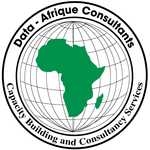|
|
Training Course On GIS Remote Sensing For Disaster Risk Management
USD 2,950 |
Venue: Nairobi
Disaster risk information is spatial in nature and Geographic Information Systems (GIS) play an important role in disaster risk management. Rapid population growth and urbanization combined with extreme climatic events are causing a rapid increase in vulnerability of communities exposed to hazardous events. Natural disasters inflict severe damage on almost the entire spectrum of social and natural habitats, ranging from housing and shelter, water, food, health, sanitation, and waste management to information and communication networks, supply of power and energy, and transportation infrastructure.
There is a great need to utilize disaster risk information in planning for effective coping mechanisms of disaster risk reduction. For this, there is a significant need to create awareness among the disaster management professionals regarding the importance of GIS and Remote Sensing.
This course is job oriented and aims to impact practical skills on how to use GIS and RS, to overcome the major challenges faced in ,pre-disasters during disaster and post-disaster management such as during early warning, hazard, vulnerability and risk assessment, damage assessment, as well as in the design of risk reduction measures.
COURSE OBJECTIVES
By the end of this course the participants will be able to:
- Understand the terminologies and meanings in relation to geospatial information technology
- Describing the pros and cons of applying geospatial information to reduce risk during disasters
- Application of GIS software (ESRI ArcGIS) to generate geographical information
- Identify, search, access, collect, and assess geospatial information with respect to reducing disaster risks
- Create maps via the use of GIS software
- Implement GIS in assessment of disaster risk and planning of reduction of disaster risk
- Describe and utilize spatial data, GIS and remote sensing in disaster risk assessment and management
- Utilize existing sources of historical disaster information and elements at risk data
- Apply GIS/remote sensing in hazard, vulnerability and risk assessment
- Employ risk information in emergency preparedness planning
- Visualize hazard and risk information
- Apply GIS/remote sensing to post-disaster damage assessment
DURATION
5 Days
WHO SHOULD ATTEND
This course targets individual professionals who require knowledge and skills on the use of GIS and RS in their organization in the field of disaster management. Participants are welcome from a broad range of organizations including physical planning, institutions, professionals and private GIS and RS related firms such as in the Agricultural Extension sector (policy makers, senor officials and officers) collaborating with local communities, in finance corporations, governments, Public Health Officers, non-governmental organizations, and research companies supporting agricultural activities and developmental projects.
COURSE OUTLINE
Basic information
- Basic GIS and RS concepts and terminologies in the context of disaster management.
- International and Regional Guidance: Protocols and action plans
- Introduction to spatial information
- Exercise I: Handling spatial information I:(Using Quantum GIS Software).
GIS data sources, data collection and integration techniques for DRM
- Data sources for DRM.
- Satellite image data sources for DRM.
- Task I: GPS /mobile phone GPS for HV field GIS data collection using ODK.
- Activity: GPS/mobile Course Tour.
- Exercise II: Handling spatial information II: GPS, GIS Integration using QGIS.
- Group discussions: How can GIS and RS be used for identification of geographic areas affected by each natural hazard.
Hazard, vulnerability and Risk assessment with GIS and RS (Pre-Disaster)
- Types and methods of risk assessment, risk evaluation, cost-benefit analysis.
- Task II: Gentle Refresher of Microsoft Excel.
- Task III: Spatial data preparation and GIS integration techniques in Microsoft Excel
- Use of GIS in disaster preparedness planning.
- Task IV: Elements at risk, hazard and vulnerability assessment using GIS.
- Task V: GIS Multi criteria analysis in vulnerability assessment.
- Group discussion: How can GIS and RS be used to map existing buildings, infrastructure, land use and critical facilities located in potential hazard areas.
Application of Risk Information for Risk Reduction Planning (Pre-Disaster)
- Task VI: Visualization of risk information (Using QGIS/ILWIS/SAGA Software).
- Task VII: Risk mapping and database generation using Excel/QGIS and SAGA
- Task VIII: Disaster monitoring: satellite image processing techniques for change detection
- Exercise III: Creating a personal geodatabase for GIS emergency support manpower with personnel location information, contact information, and specialized skills.
- Exercise IV: Creating a risk map
- Group discussion: Use of GIS and RS in identification of the extent and magnitude of each hazard.
Introduction to Early warning systems and Information Networks (Pre-Disaster)
- Early warning systems and Information Networks for major hazards.
- Group discussion: How can GIS and RS be used in a Drought Early Warning System
Disaster Impact Analysis (Post Disaster)
- The use of satellite imagery for disaster relief and recovery.
- Activity: Visit to a satellite data receiving and processing station depending on location of training and availability of time.
- Group discussion: How can satellite images and aerial photos be used to locate refugee and internally displaced persons?
Public Participatory GIS and Disaster Risk Management (Pre and Post Disaster)
- Participatory GIS as a tool for DRM mapping.
- Task IX: Using Google Maps and Google Earth in DRM.
- Exercise VI: SMS to Map for community crisis mapping - Using Ushahidi.
- Group discussion: What GIS and RS tools are suitable for mapping of urban (social) hazards such as crime zones, drug corners, and accident black spots
GENERAL NOTES
- This course is delivered by our seasoned trainers who have vast experience as expert professionals in the respective fields of practice. The course is taught through a mix of practical activities, theory, group works and case studies.
- Training manuals and additional reference materials are provided to the participants.
- Upon successful completion of this course, participants will be issued with a certificate.
| Nairobi | Dec 09 - 13 Dec, 2024 |
Class Session: 08:00:am - 16:00:pm
| USD 2,950.00 | (Kigali) |
| USD 4,500.00 | (Dubai) |
| USD 1,500.00 | (Nairobi) |
| USD 1,500.00 | (Mombasa) |
DUNCAN KARIUKI +254723360025
Related Courses
 Training Course On Quantitative Data Analysis With Stata
Training Course On Quantitative Data Analysis With Stata
5 days, 09 - 13 Dec, 2024
Data-Afrique Consultants
 Training Course On Artificial Intelligence Essentials
Training Course On Artificial Intelligence Essentials
5 days, 09 - 13 Dec, 2024
Data-Afrique Consultants
 Training Course On Agribusiness Enterprise Development And Management
Training Course On Agribusiness Enterprise Development And Management
5 days, 09 - 13 Dec, 2024
Data-Afrique Consultants
 Training Course on Business Continuity Planning and Management
Training Course on Business Continuity Planning and Management
5 days, 09 - 13 Dec, 2024
Data-Afrique Consultants



